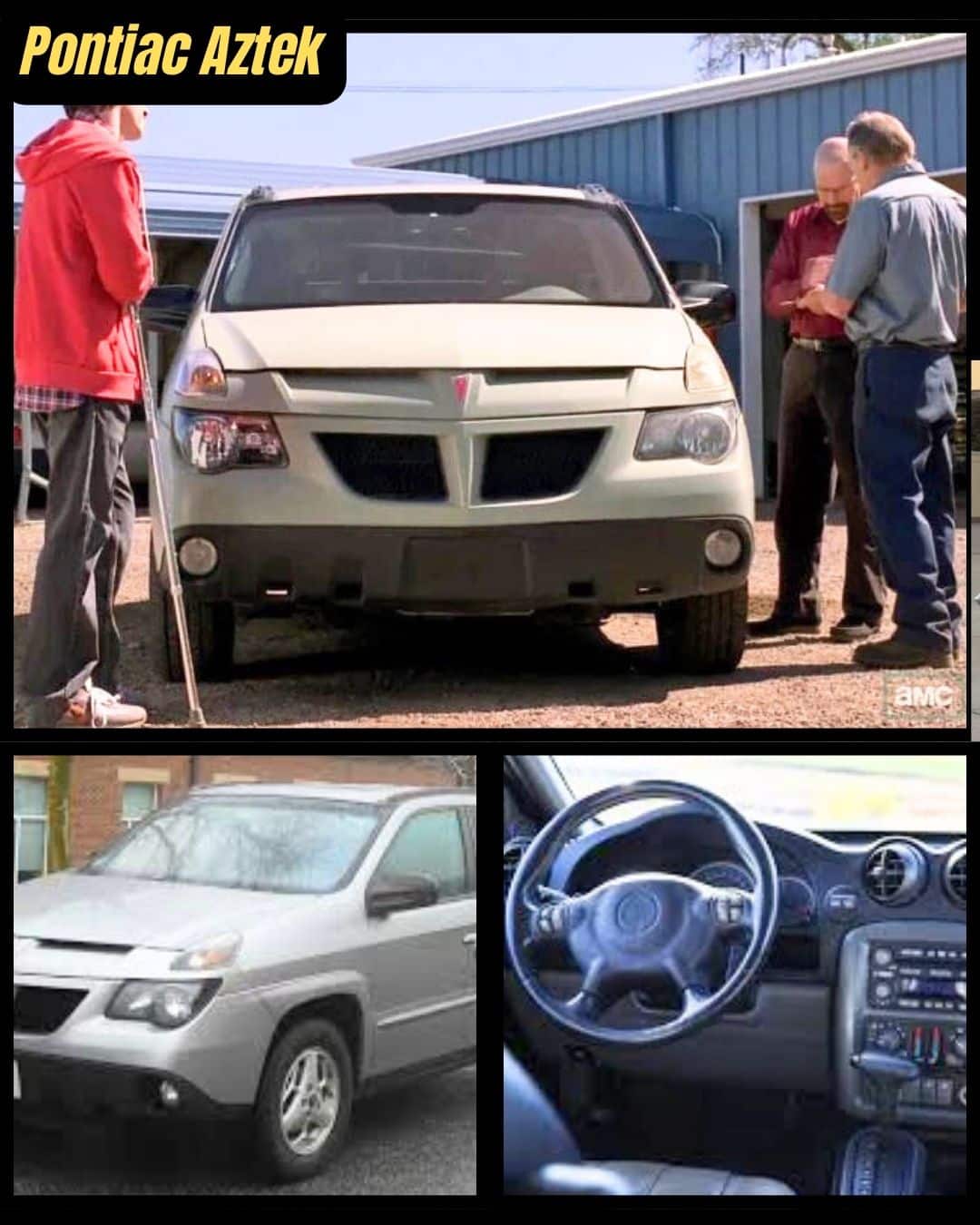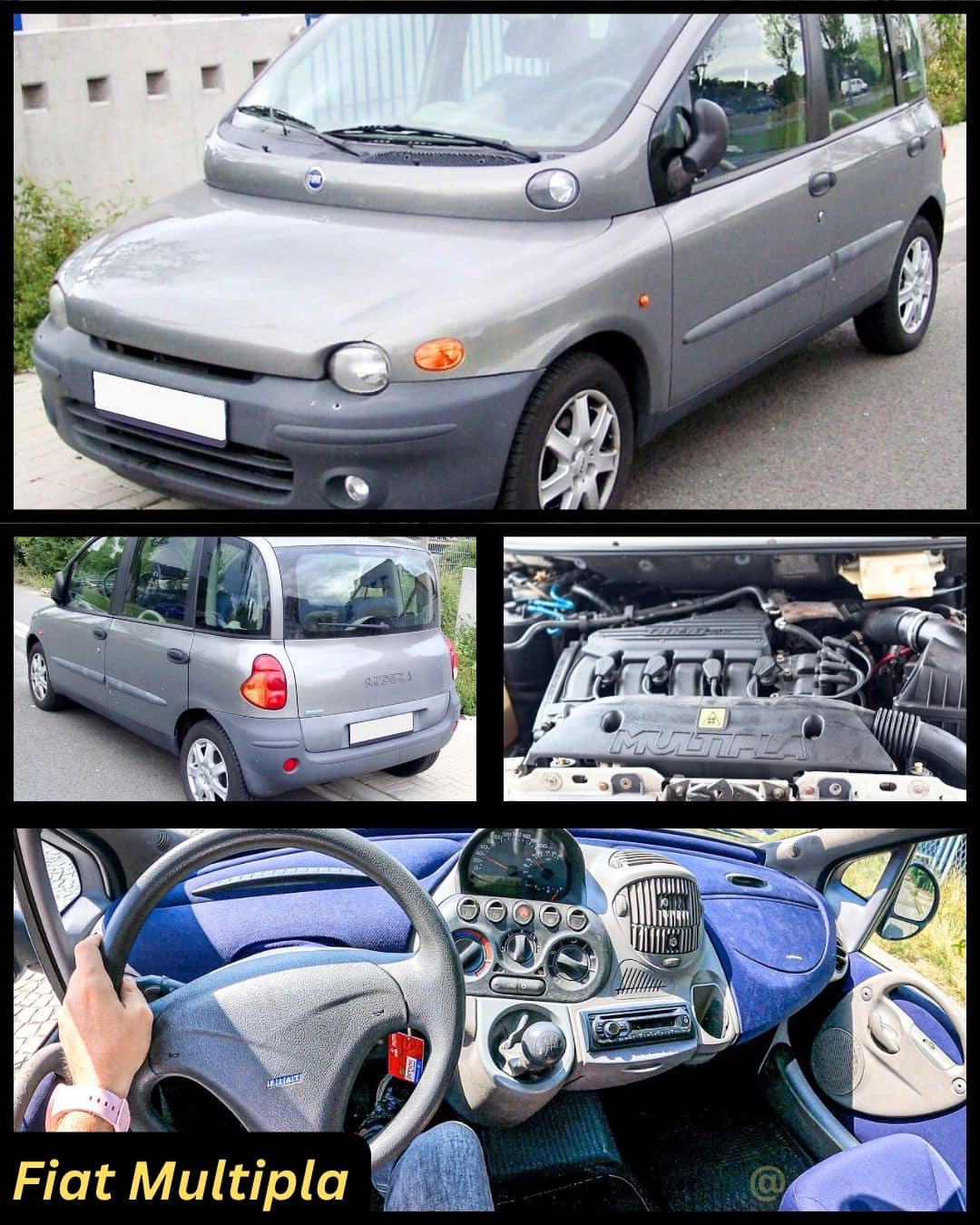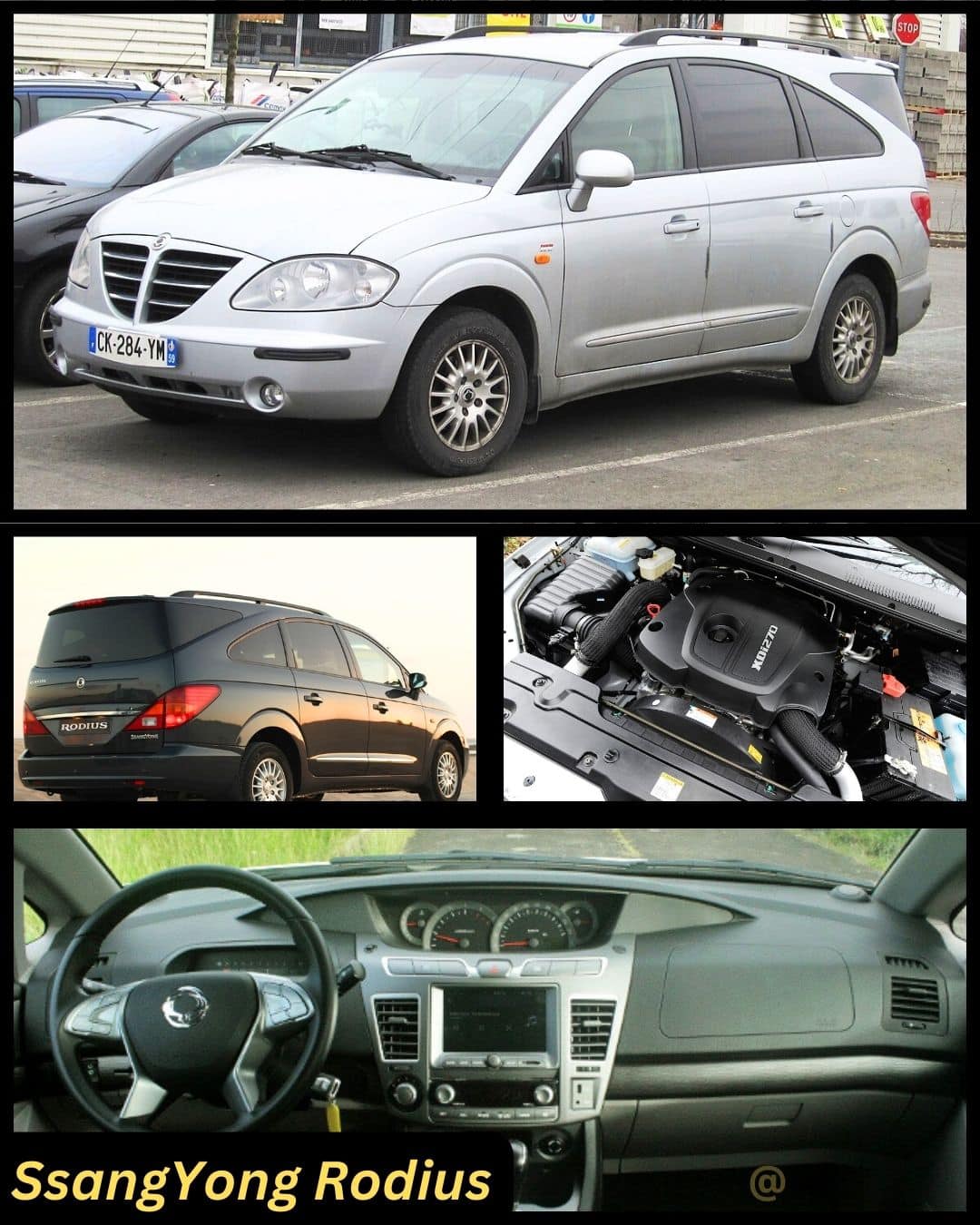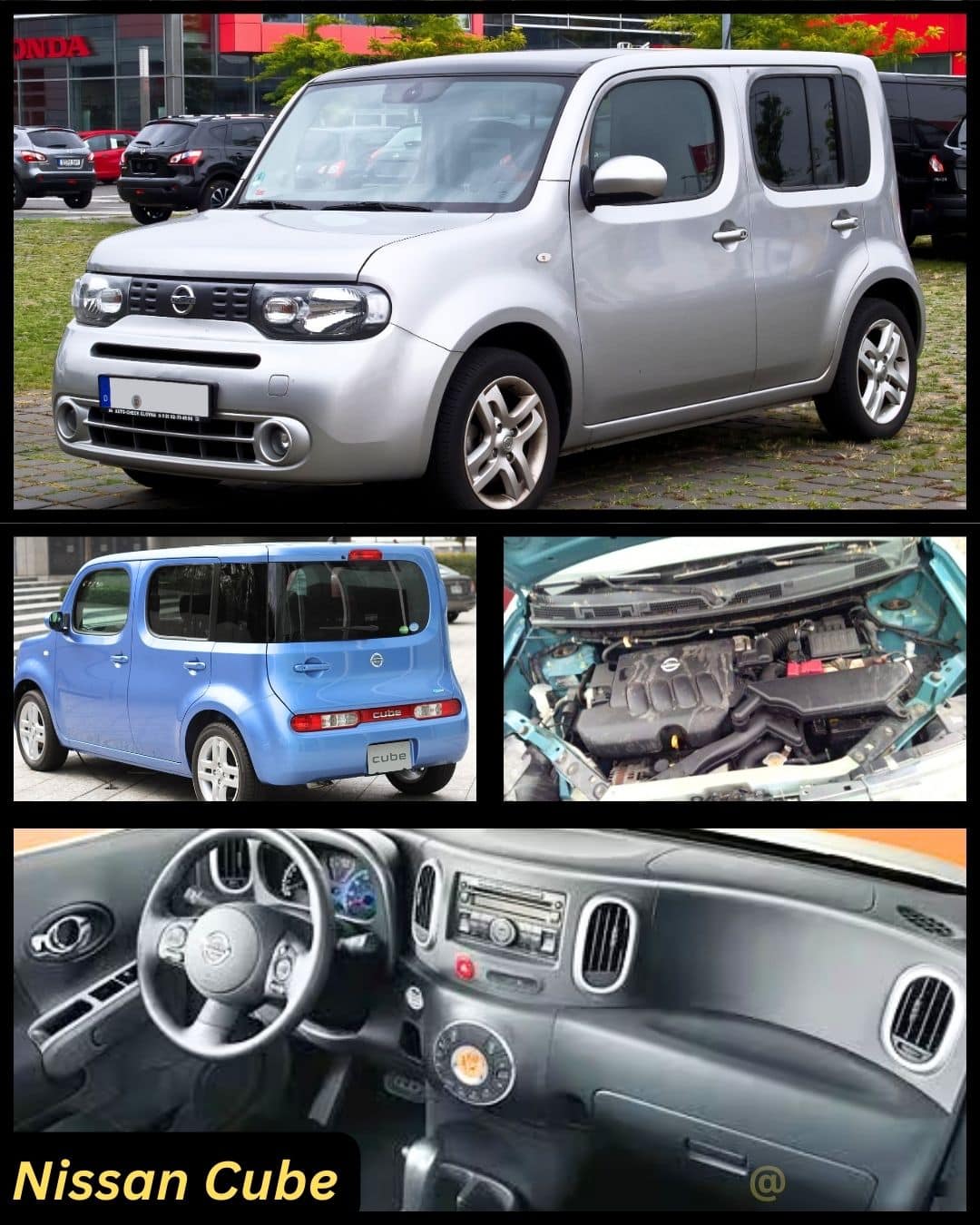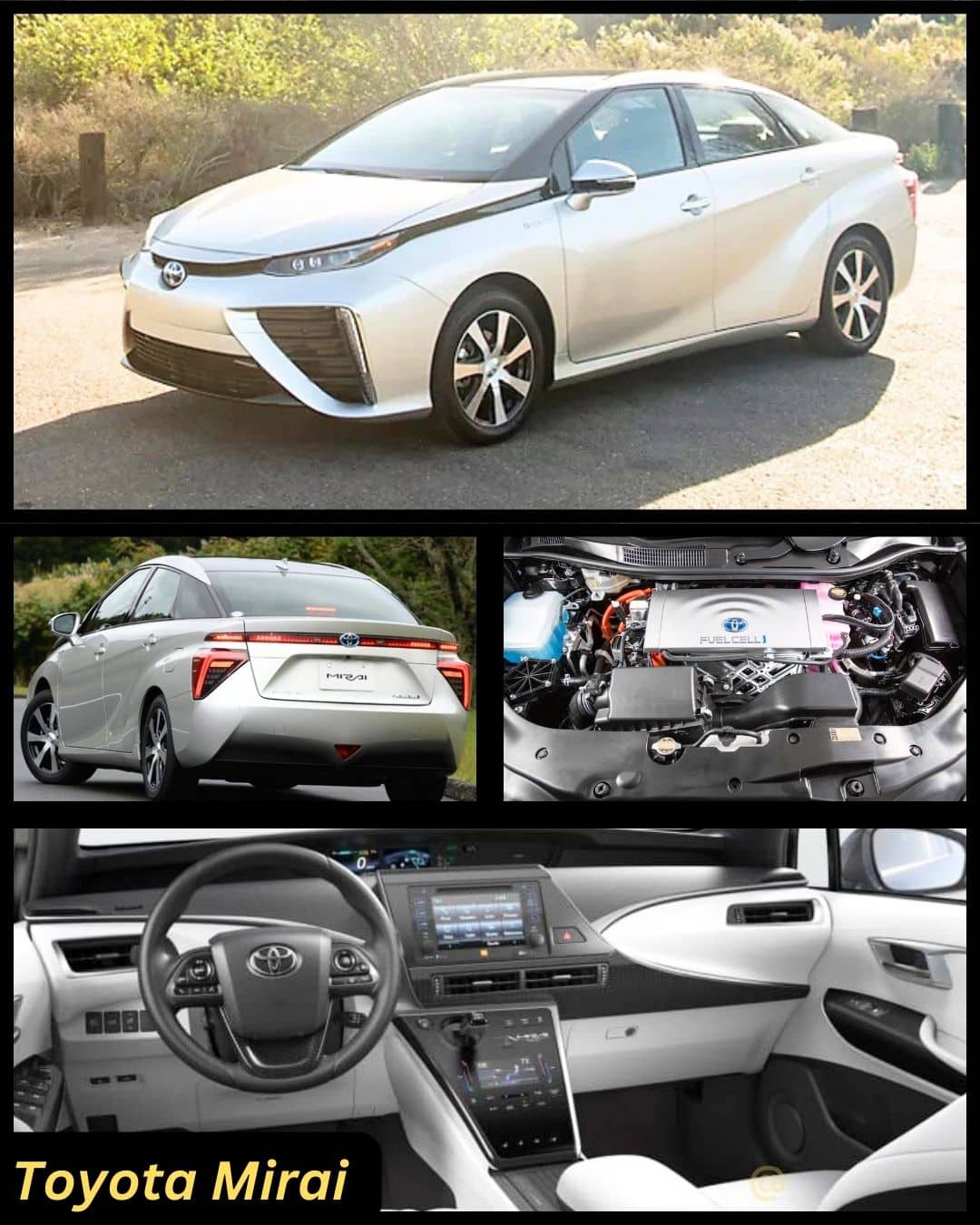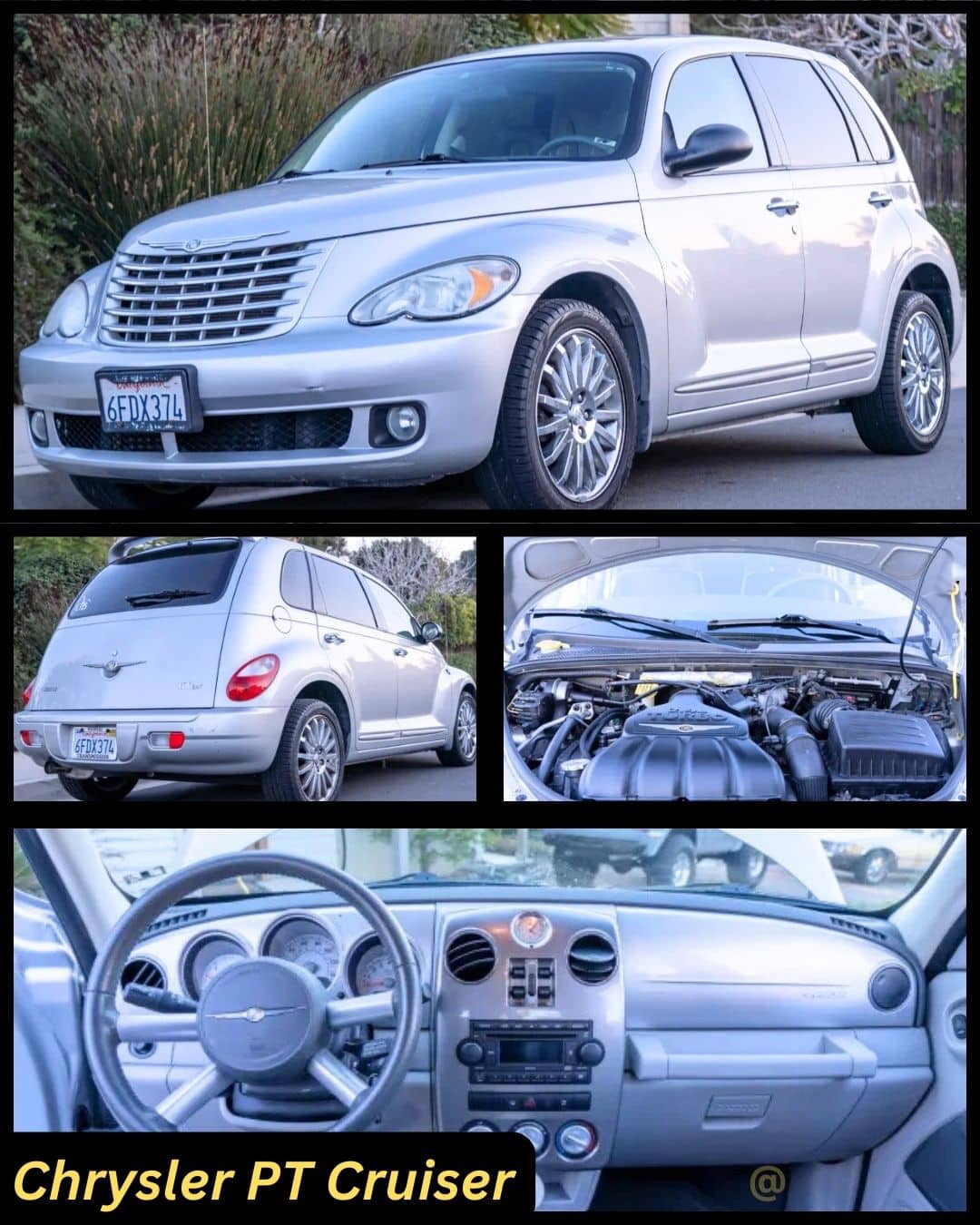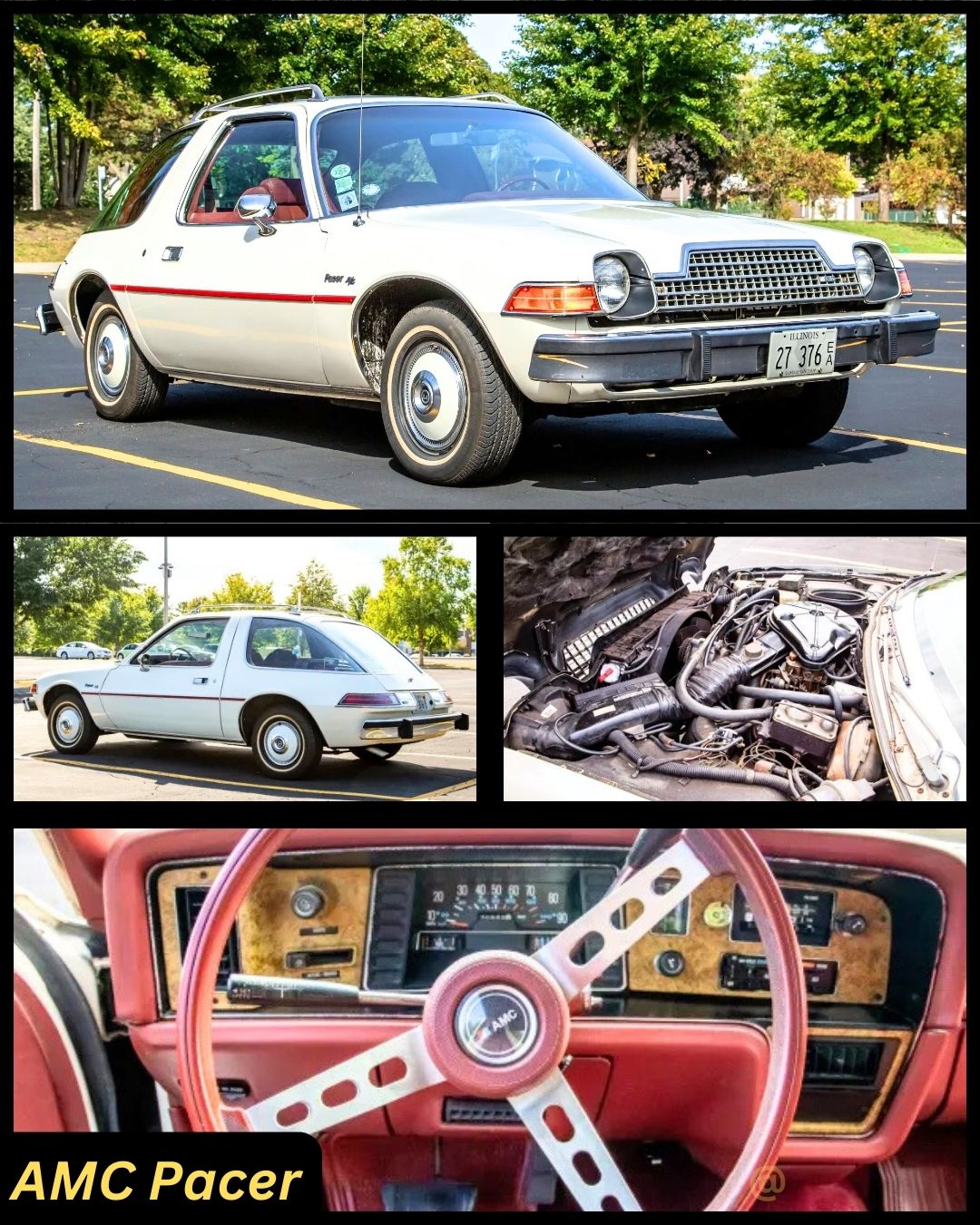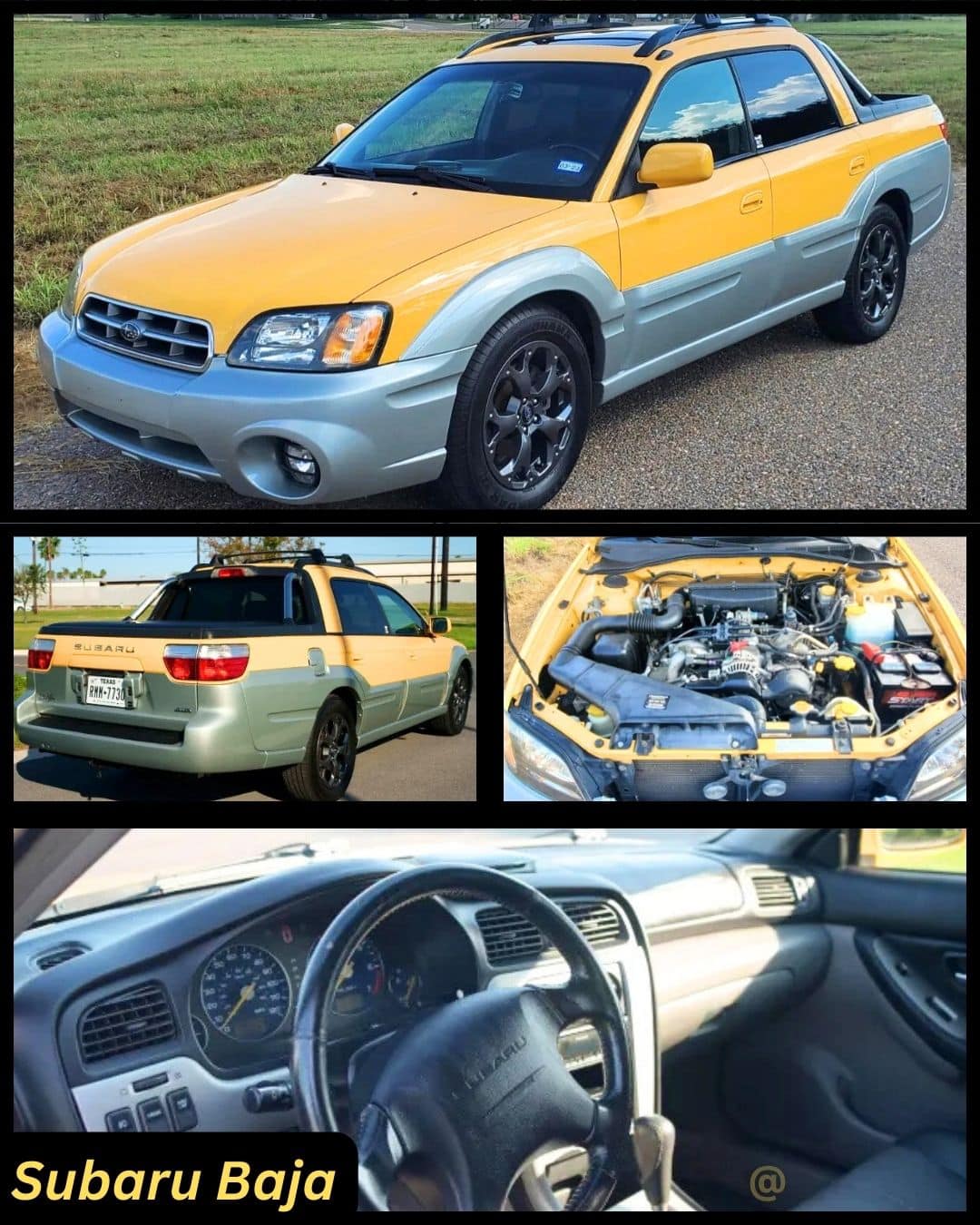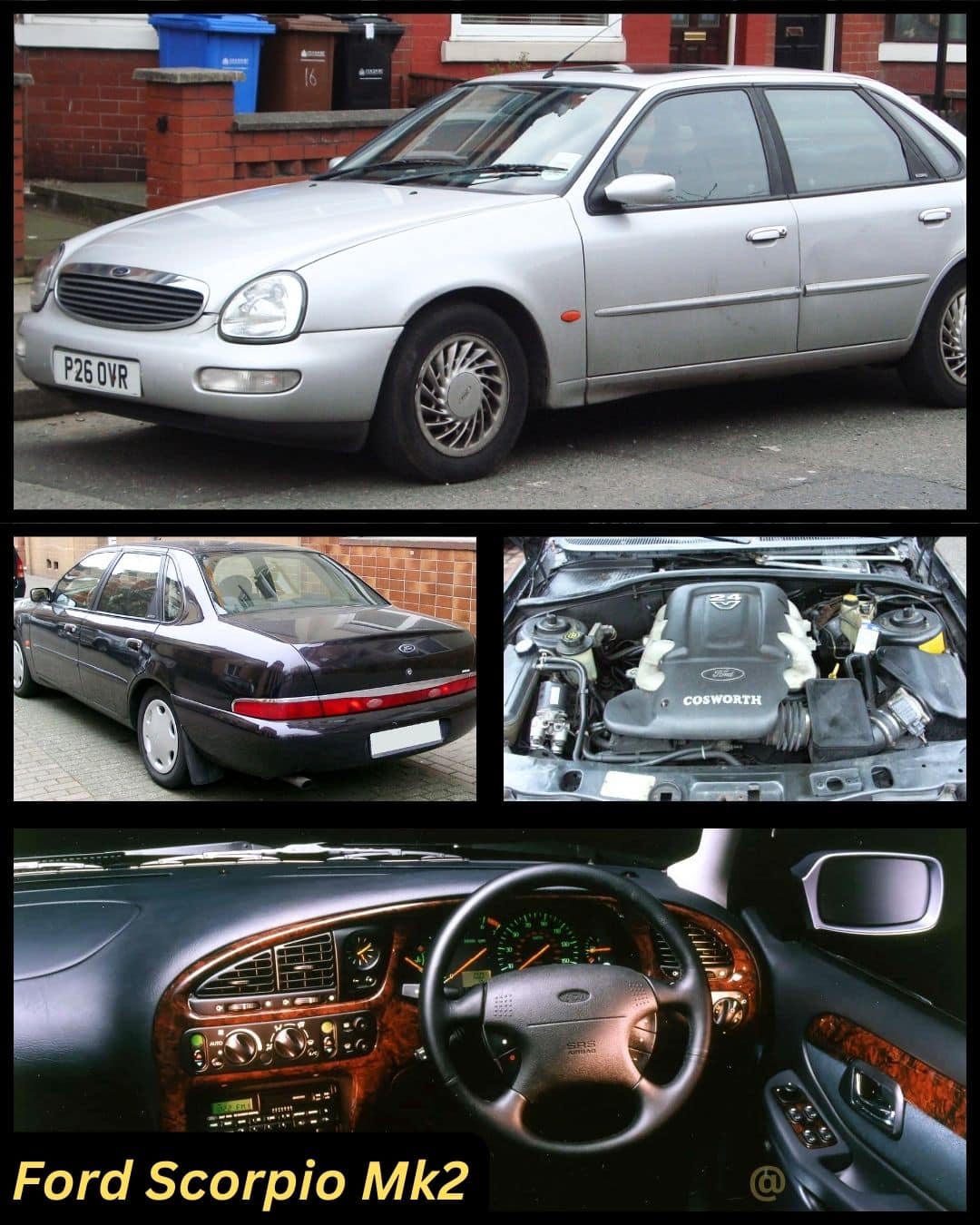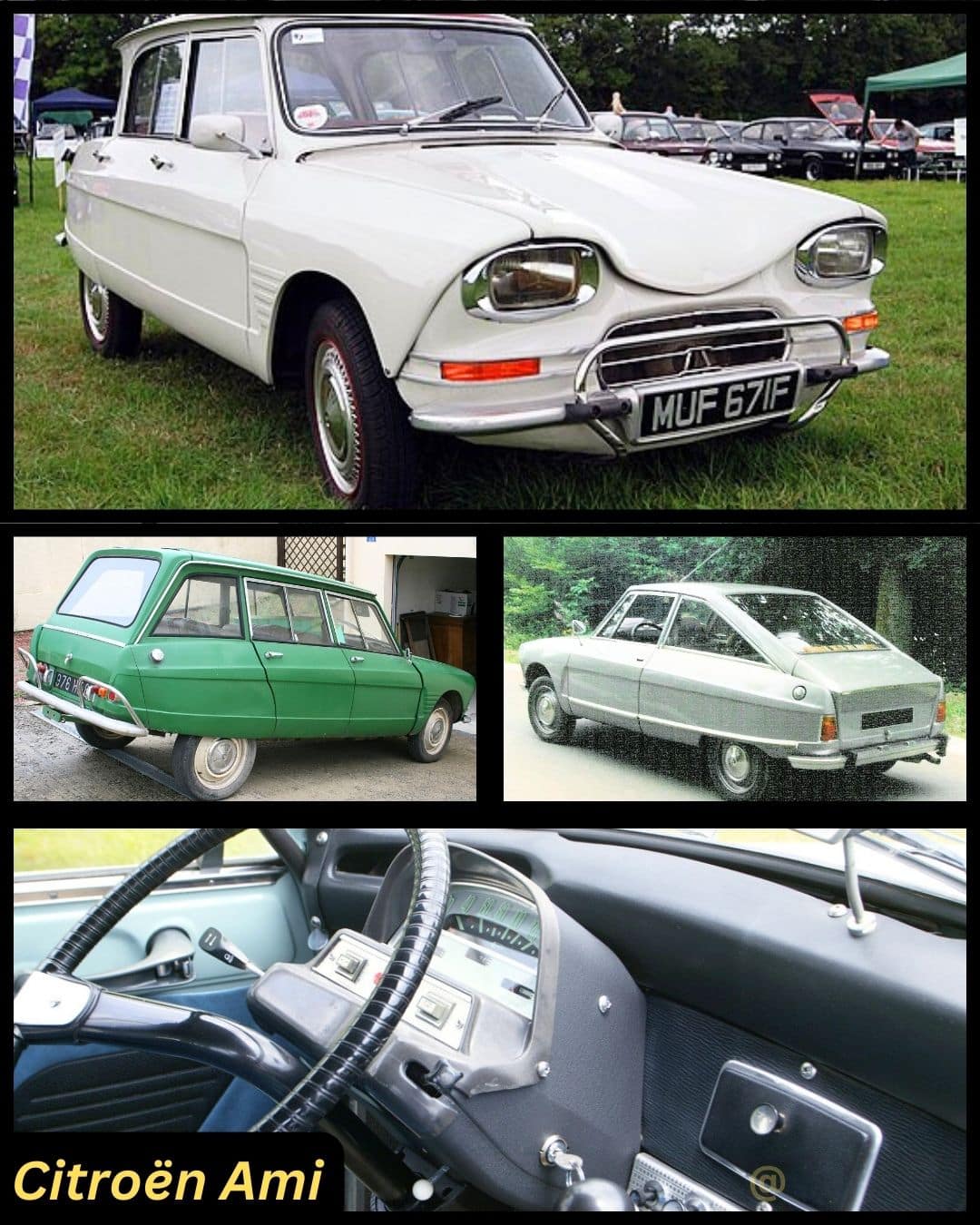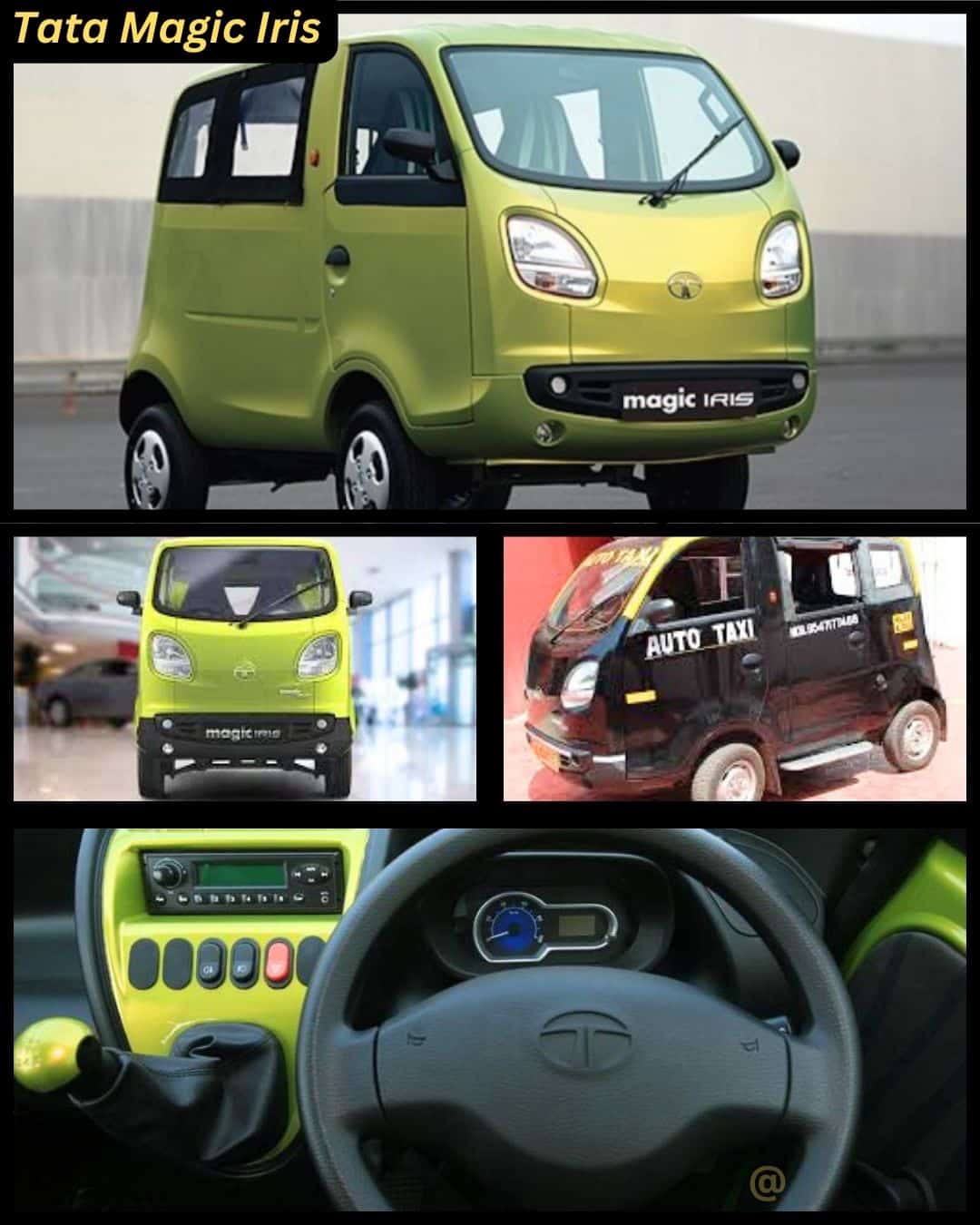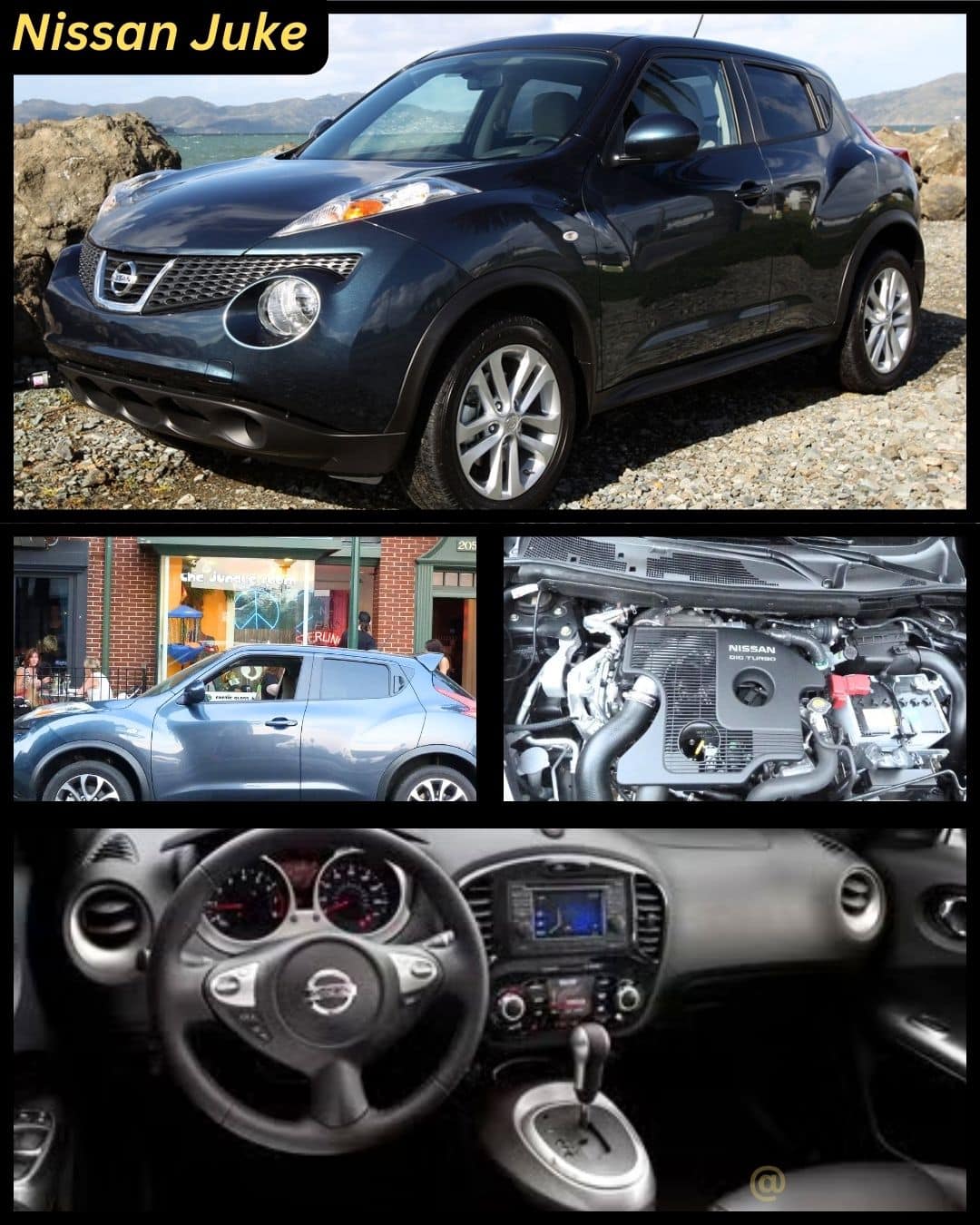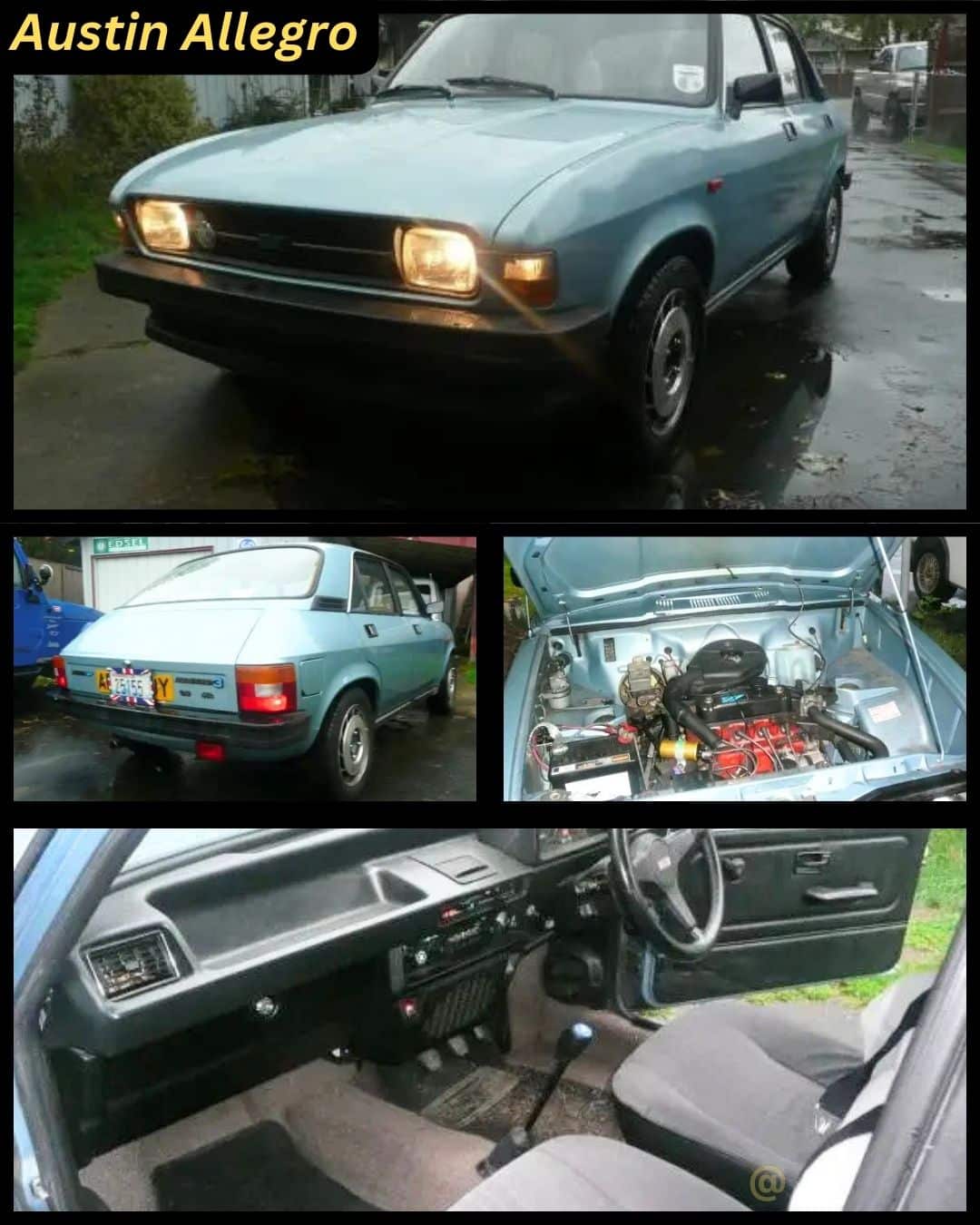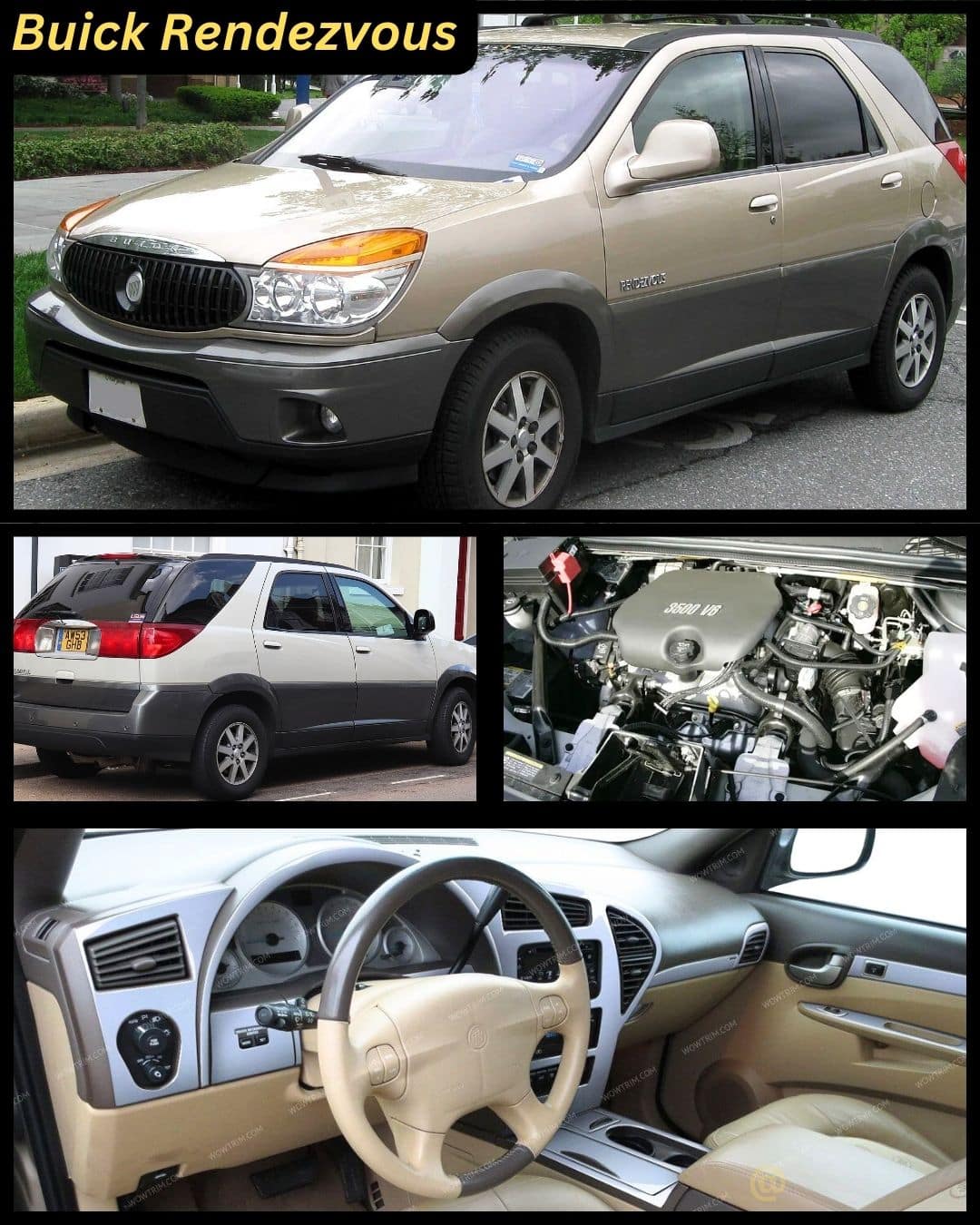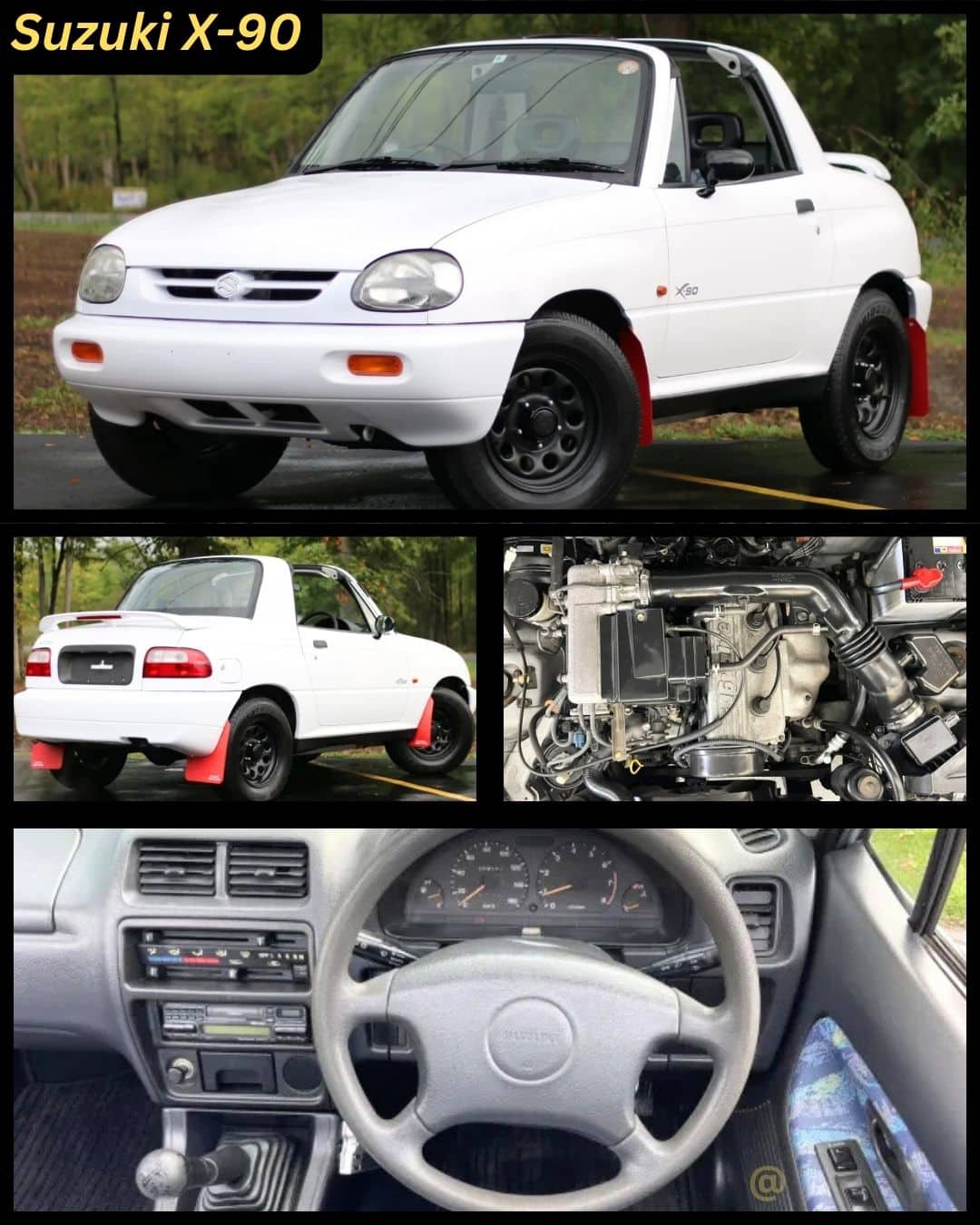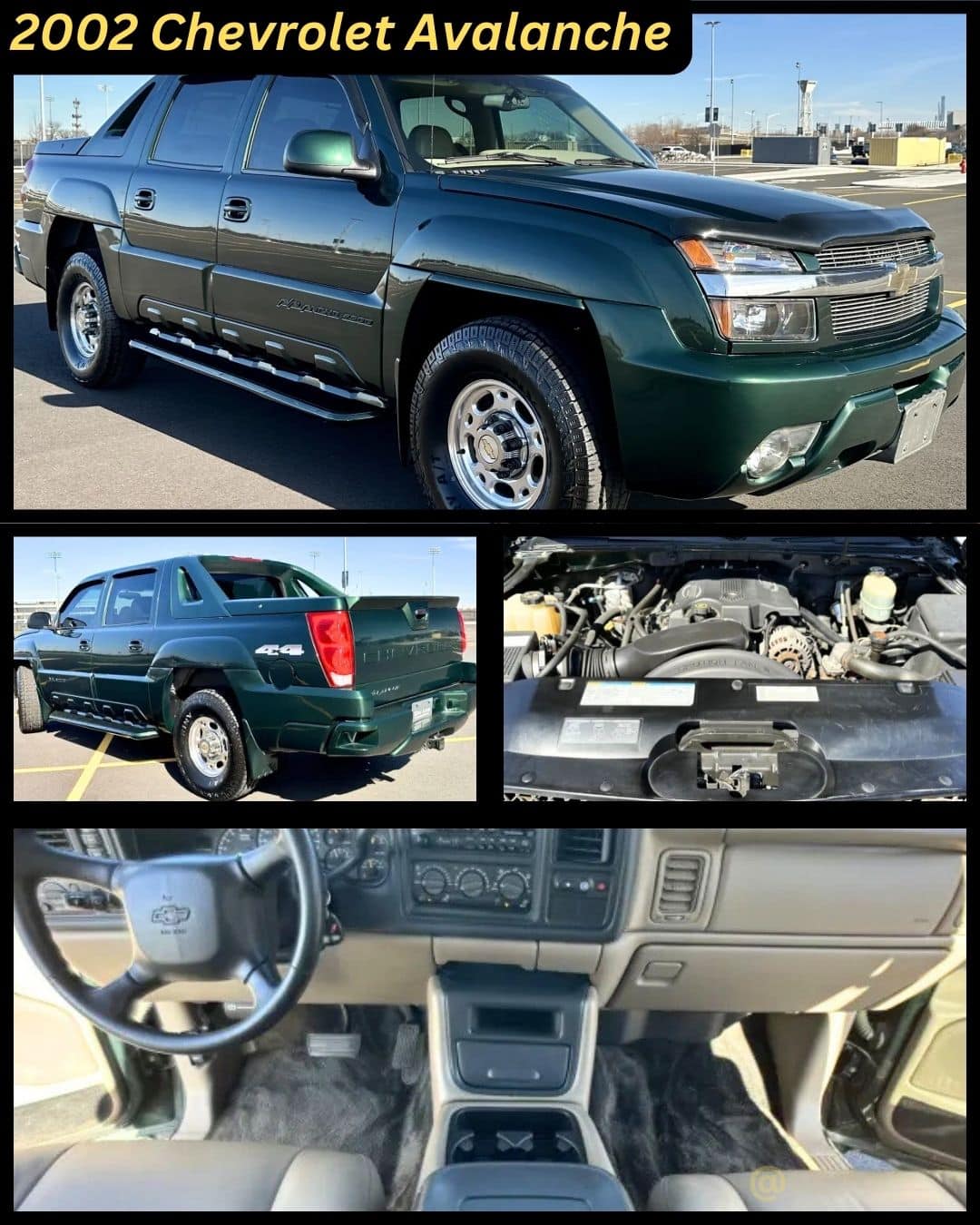Some cars turn heads for all the wrong reasons. In a world brimming with sleek designs, these 19 models stand out for their dicey at best style choices.
1. Pontiac Aztek (Not Even Walter White Could Save It’s Rep)
The Pontiac Aztek has often been crowned the king of odd automotive aesthetics. Its awkward front fascia, split grille, and overly chunky body lines gave it an unbalanced stance on the road.
The protruding plastic cladding looked like mismatched body armor, and that alone made onlookers do a double-take. Many drivers felt it was trying too hard to be futuristic and practical all at once.
Inside, some folks appreciated the camping-friendly features like the optional tailgate tent. Others couldn’t get past the mismatched dashboard layouts and cheap-feeling materials.
The Aztek was meant to show off Pontiac’s bold crossover vision, but it quickly became an unfortunate punchline. It popped up in TV shows, movies, and countless worst-car lists, solidifying its place in infamy.
Critics still argue that while it was versatile, its style was simply too bizarre. Even die-hard fans admit it’s the kind of design you either love or hate—with very little in between.
2. Fiat Multipla (Double-Bubble Quirkiness)
The Fiat Multipla’s two-tier windshield and bulging headlights created a look that had pedestrians doing double-takes. Some said it resembled a frog, while others thought it looked like two cars welded together.
Despite the odd exterior, the interior was surprisingly spacious, boasting three seats in the front row. Families found its cabin practical, though the dash layout felt scattered.
The wide stance gave it decent stability on the road, but most people couldn’t get past the unusual shape. Fiat tried to tone things down in a facelift, yet the original design was already burned into public memory.
Because it offered good visibility and easy handling, a loyal group of owners defended it to the end. However, the Multipla remains a go-to reference for “ugliest car” debates.
Its outlandish front end remains a testament to Italy’s risky design ethos. While some admire its originality, the rest of the world kept scratching their heads.
3. SsangYong Rodius (Minivan Meets Luxury Yacht?)
The SsangYong Rodius aimed to be a spacious MPV, but it looked more like a boat on wheels. Its rear section jutted out so abruptly that it felt like an afterthought tacked onto a standard van.
Many critics compared its silhouette to a poorly Photoshopped minivan, citing uneven curves and an awkward roofline. Inside, it was undeniably huge, appealing to large families in need of extra seats.
Still, its design drew more raised eyebrows than compliments. SsangYong tried to justify the shape by highlighting practicality and cargo space.
Buyers looking for a conventional people carrier often chose something else, afraid of the Rodius’s offbeat looks. Reliability aside, the styling alone kept it off many shopping lists.
Today, it’s a prime example of how function can clash hard with form. Even if it delivered on space, the design remains a conversation starter for all the wrong reasons.
4. Nissan Cube (Boxy Style Taken Too Far)
Nissan rolled out the Cube with high hopes of capturing the cool, quirky vibe that some buyers crave. Its asymmetrical rear window and ultra-boxy profile definitely stood out in traffic.
While the interior boasted surprising roominess and lounge-like seats, onlookers often asked: “Is that thing even finished?” The wraparound rear glass felt like a gimmick, and the tiny front grille looked almost toy-like.
Drivers who bought the Cube loved its easy maneuverability and functional layout. But many couldn’t overlook the shape that resembled a rolling refrigerator.
In some markets, the car gained a cult following, thanks to customizable features and unique accessories. Still, plenty of skeptics found the styling too literal, as if Nissan’s design team took the concept of a cube too seriously.
Critics noted that the Cube risked being more novelty than practicality. Even so, it remains a memorable oddball on the road.
5. Toyota Mirai (Futuristic Yet Off-Putting)
The Toyota Mirai introduced hydrogen fuel-cell technology to a wider audience, but its appearance was anything but subtle. Up front, enormous vents and odd angular panels made it look more like a concept car than a daily driver.
Some praised Toyota for pushing boundaries, yet others felt the Mirai tried too hard to appear futuristic. In profile, the lines sloped awkwardly, creating a design that didn’t flow as smoothly as intended.
The interior was high-tech, with digital displays and eco-friendly materials. However, many test drivers admitted they felt self-conscious pulling up in such a polarizing vehicle.
Even though it championed environmental progress, critics couldn’t overlook the jarring exterior. Toyota continued to tweak the design, hoping to soften its edges over time.
When it launched, enthusiasts were excited about hydrogen power, but casual observers just saw an oddly shaped sedan. The Mirai remains a testament to how radical styling can overshadow groundbreaking tech.
6. Chrysler PT Cruiser (Retro Gone Awry)
Chrysler’s PT Cruiser attempted to channel a vintage hot-rod vibe with modern convenience. Instead, it ended up as a love-it-or-hate-it hatchback that some called “cartoonish.”
Its tall roofline and rounded fenders tried to evoke 1930s aesthetics, but the result didn’t hit the mark for everyone. The bulky grille and oversized headlights made the front end feel bloated.
Inside, it offered decent practicality with a folding rear seat and upright driving position. Yet the novelty factor wore off quickly, especially as mechanical issues piled up in some model years.
Sales were strong initially, thanks to buyers seeking something different from the usual compact car. Over time, though, many critics labeled it a styling misfire stuck between classic and modern.
Whether you view it as an endearing throwback or a design flop, the PT Cruiser still pops up in discussions of peculiar car styling. Its retro charm just never fully matured.
7. AMC Pacer (Bubble Car That Couldn’t Hide)
The AMC Pacer earned the nickname “bubble car,” and for good reason. Its extra-wide body and enormous glass area stood out in an era of boxy sedans.
Designers wanted a roomy cabin and panoramic view, which they certainly achieved. However, the stubby nose and short wheelbase gave it an oddly proportioned shape.
Under the hood, engines were nothing special, and the added weight of all that glass didn’t help performance. Passengers did enjoy great visibility, though, which was one of the few upsides.
Over time, the Pacer became a pop-culture icon—partly due to its cameo in movies like “Wayne’s World.” Still, nobody rushed to call it beautiful.
Even AMC fans admit the Pacer’s quirky styling was a gamble. Today, it’s often referenced as a prime example of 1970s design experimentation gone sideways.
8. Subaru Baja (El Cami-NO)
Subaru tried to merge the practicality of a truck with the comfort of a wagon in the Baja. The result was a compact pickup with an identity crisis.
From the front, it looked like any other Subaru, sporting the brand’s familiar grille and headlights. But once your eyes shifted to the rear, you found a small, oddly shaped bed that appeared tacked on.
The bright cladding and two-tone paint schemes didn’t do it any favors. Buyers were confused about whether this was a lifestyle vehicle or a gimmick.
Inside, it offered the usual Subaru perks like all-wheel drive and decent reliability. However, that tiny bed made it less functional than a real truck, and the styling didn’t appeal to wagon loyalists either.
Enthusiasts enjoy pointing to the Baja as proof that Subaru is never afraid to experiment. Sadly, most critics just saw an awkward mashup without a clear purpose.
9. Chevrolet HHR (Heritage High Roof Head-Scratcher)
The Chevy HHR was designed by the same person behind the Chrysler PT Cruiser, and it showed. This compact wagon styled itself after vintage Chevy models, but the thick pillars and high beltline gave it a claustrophobic feel.
The oversized fenders and bulging hood tried for nostalgic flair, yet many found it forced. Visibility took a hit with those small windows, making the interior feel dark.
On the upside, the cargo area was roomy, and the seats folded down for extra space. Still, the outward design overshadowed any practical advantages.
Drivers who liked retro vibes embraced the HHR for its charm, but critics labeled it a “wannabe PT Cruiser clone.” Marketing hype quickly faded as other compact crossovers hit the market with sleeker looks.
Over time, the HHR earned a reputation for being oddly charming to some, but an eyesore to many. Its place in automotive design remains permanently stuck in the “quirky” category.
10. Volkswagen Thing (Military Roots, Civilian Eyesore)
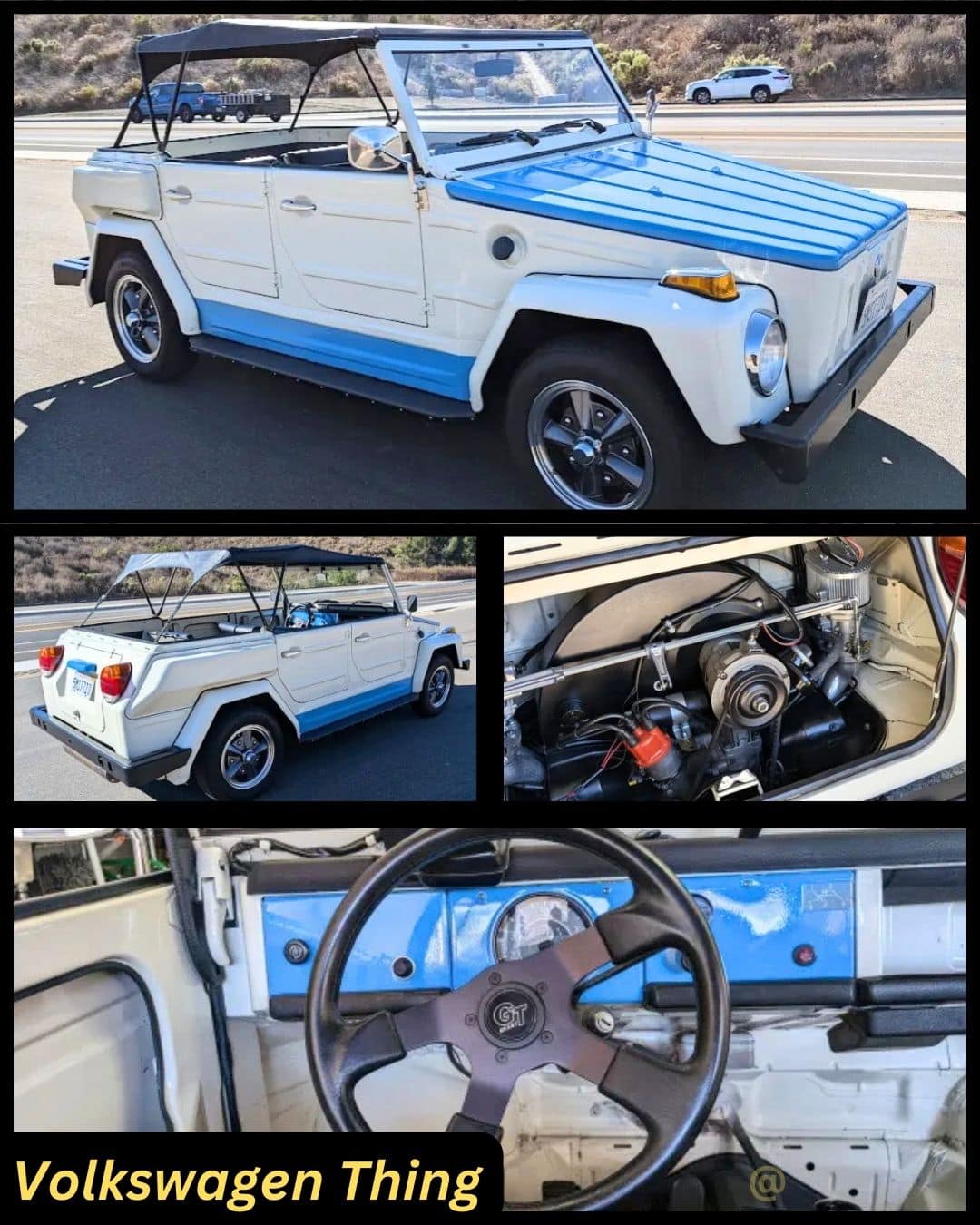
Originally based on a military vehicle, the Volkswagen Thing was as utilitarian as it looked. Its flat panels, simple doors, and minimal styling screamed “basic transportation.”
Some admired its ruggedness and the fact you could remove the doors and roof. Yet the near-vertical windshield and boxy body seemed awkward on civilian roads.
Passengers found the ride spartan, with exposed metal surfaces and few creature comforts. Beachgoers loved it, but city drivers weren’t so enamored.
Despite its iconic status among some VW enthusiasts, critics slammed it as “ugly, slow, and loud.” In fairness, it delivered an unmistakable personality you couldn’t ignore.
For those who wanted something truly different, the Thing fit the bill. Even so, it’s gone down in history as a love-it-or-hate-it design that looked more at home on sand dunes than on suburban streets.
11. Mitsuoka Orochi (Sports Car or Mythical Beast?)
Japanese boutique automaker Mitsuoka is known for eccentric designs, and the Orochi is no exception. Its flowing lines and gaping front grille aimed to mimic the mythical serpent it’s named after.
Many enthusiasts just found it unsettling. The headlights looked like drooping eyes, while the hood and fenders appeared to melt into each other in a way that was more bizarre than artistic.
Underneath, it had a mid-engine layout and modest performance, but the styling overshadowed any driving impressions. People couldn’t decide if it was futuristic or just plain weird.
The interior leaned toward luxury, but by then, most folks were already turned off by the exterior. Limited production only added to its mystique, attracting a few collectors who craved the unusual.
To this day, the Orochi stands as a stark reminder that unique doesn’t always equal beautiful. It’s a conversation starter, if nothing else.
12. Ford Scorpio Mk2 (Face That Only a Designer Could Love)
When Ford revamped the Scorpio in the mid-1990s, the result was a front end that seemed to droop in permanent disappointment. The oval headlights and rounded hood clashed with the car’s otherwise conservative silhouette.
Critics quickly branded it one of the most unfortunate facelifts in the brand’s history. Sales dropped, and the Scorpio disappeared from many markets soon after.
Inside, the cabin offered comfortable seats and plenty of space, but the divisive exterior kept people away. Even the trunk design seemed at odds with the rest of the body.
Ford had hoped to give the Scorpio a modern edge, yet it ended up looking like an awkward blend of curves and angles. Some loyalists appreciated the improved ride quality, but aesthetics counted for a lot.
The bulbous front end and odd rear lights secured its spot on many ugly car lists. The Mk2 Scorpio is a lesson in how a facelift can backfire spectacularly.
13. Citroën Ami (Tiny Box for City Streets)
The original Citroën Ami, dating back to the 1960s, featured odd proportions that baffled casual observers. The front end looked elongated, while the rear felt abruptly cut off.
Designers placed the headlights at a quirky angle, and the high roofline gave it a tall, boxy silhouette. Inside, seating was surprisingly roomy, but that didn’t make up for the borderline cartoonish exterior.
Mechanically, the Ami was simple and cost-effective, catering to budget-conscious drivers in Europe. Yet the styling overshadowed any practical virtues.
Over the years, it garnered a cult following among fans of retro French cars. Still, many viewed it as a peculiar relic, a prime example of unconventional design from a brand known for taking risks.
While some find the Ami charmingly odd, most folks wonder what the designers were thinking. It’s often hailed as a milestone in “ugly but endearing” automotive history.
14. Tata Magic Iris (Micro-Van That’s All Awkward)
Tata’s Magic Iris is a tiny van designed for urban transportation in crowded cities. Its stout nose and sloping roof give it the look of a bubble ready to pop.
The wheels seem too small for its body, and the large headlights dominate the front end awkwardly. Inside, the seating is tight, and the dashboard feels more like a cramped bus than a personal vehicle.
Built for practicality, the Iris was never meant to win design awards, but its styling still managed to shock onlookers. Critics argued it looked incomplete or cobbled together from leftover parts.
On the plus side, it’s maneuverable in tight spaces and inexpensive to run, which meets the needs of certain buyers. Yet the aesthetic left many questioning if it was strictly function over form with no in-between.
While it serves a purpose in some markets, most car enthusiasts see it as an eyesore. The Iris proves minimalism can cross into downright unattractive territory.
15. Nissan Juke (Crossover or Frog on Wheels?)
When Nissan unveiled the Juke, it sparked immediate controversy with its bulging fenders and high-mounted headlights. Some called it “frog-like,” while others found it playful and unique.
The split lighting setup confused many, as the top cluster looked like eyes, and the lower cluster like a completely different design. From certain angles, it resembled an alien creature crossing the road.
Despite the odd appearance, the Juke offered fun turbocharged performance and agile handling. Younger buyers appreciated its quirky style, but traditionalists often dismissed it as a design fail.
Over time, Nissan toned down some features in later iterations, yet the original Juke remains an icon of polarizing automotive design. Love it or hate it, it definitely turned heads.
Even with its popularity among some circles, critics still call out its awkward proportions. It’s a reminder that breaking design conventions can lead to both loyal fans and vocal detractors.
16. Austin Allegro (The Car That Couldn’t Keep Its Shape)
The Austin Allegro, produced by British Leyland in the 1970s, was supposed to be a modern family car. Instead, it ended up infamous for its strange “quartic” steering wheel and a shape that never looked quite right.
The design aimed for aerodynamic efficiency, but the stubby nose and oddly curved roof left it visually unbalanced. Mechanical issues also plagued early models, so the aesthetics weren’t its only flaw.
Inside, the dash layout felt cheap, and the rumored “Hydragas” suspension gave it a bouncing ride. Even after updates, the Allegro never shook off its reputation for awkwardness.
Despite attempts to pitch it as a revolutionary design, sales were lukewarm, and reliability woes turned off many potential buyers. Today, it’s a quirky footnote in British automotive history, with a few die-hard fans.
For most observers, the Allegro serves as a cautionary tale about half-baked styling and engineering. It was neither sleek nor bold—just strangely off.
17. Buick Rendezvous (SUV That Tried Too Hard)
Buick’s Rendezvous was pitched as a classy crossover, blending a minivan’s practicality with an SUV’s stance. Yet its blocky front grille and mismatched body cladding gave it a dated look right from launch.
Many felt the overall design lacked cohesion; the rear end looked like it belonged to a different vehicle. The awkward proportions were a turn-off, especially in a segment with more stylish competitors.
Interior space was generous, and the ride was fairly comfortable, but these positives couldn’t overshadow the clumsy exterior. Buick loyalists were confused about who the Rendezvous was meant to attract.
As time went on, other SUVs offered more modern styling and better technology, leaving the Rendezvous behind. Even with decent sales in some regions, it remains a talking point in ugly crossover discussions.
Its attempt to fill multiple niches resulted in a disjointed design that never truly pleased any demographic. For many, it’s a case study in trying to be everything at once—and failing aesthetically.
18. Daewoo Lanos (Forgettable Subcompact With a Bland Face)
The Daewoo Lanos was designed as a simple, no-frills subcompact for budget-minded drivers. Unfortunately, its bland, droopy front end and uninspired shape made it easy to overlook on the street.
A tiny grille and awkwardly placed headlights gave the car a perpetually sad expression. Inside, cheap plastics and a basic layout reinforced its budget credentials.
While it offered decent fuel economy and a low price, the Lanos lacked any visual flair to stand out in a crowded market. Rust issues and mediocre build quality didn’t help its reputation, either.
Owners appreciated the affordable ownership costs, but styling often ranked at the bottom of the pros-and-cons list. Daewoo’s subsequent rebranding under GM didn’t do much to save the Lanos from an “ugly duckling” label.
Though it fulfilled a need for cheap transportation, nobody celebrated its looks. It faded from the spotlight almost as quickly as it appeared.
19. Suzuki X-90 (Mini-SUV Confusion)
The Suzuki X-90 dared to blend a compact two-seater coupe with an SUV’s high stance. What came out was a pint-sized oddball that baffled nearly everyone.
From the front, it looked somewhat normal, but then the roofline swooped back into a tiny trunk, making it seem chopped off. The T-top roof tried to inject fun, but the overall design still felt out of proportion.
Space in the cabin was limited, and the miniature rear cargo area barely fit groceries. Off-road capability was there in theory, but most owners rarely tested it.
Critics blasted its cartoonish shape and lack of practicality for everyday life. Sales were dismal, and it disappeared from showrooms, only to become a punchline among enthusiasts.
The X-90 remains a shining example of how trying to do too many things can lead to a confusing final product. It’s a quirky footnote that remains memorable for all the wrong reasons.
20. Chevy Avalanche -1’st Gen (Great Idea, Ugly Execution)
The Chevy Avalanche tried to blend the comfort of an SUV with the functionality of a pickup. Its oversized plastic cladding along the sides gave it a bulky, somewhat toy-like appearance that divided opinions.
From the front, it looked like a heavy-duty truck ready to tackle any job. But the rear transition into a shorter pickup bed left many scratching their heads about its actual purpose.
Chevrolet touted the mid-gate feature, allowing the rear seats to fold down for extra cargo space. While that was clever, the unusual proportions often stood out more than the Avalanche’s versatility.
In certain trims, bright two-tone color schemes only amplified the design’s busy nature. Even fans admitted the styling could come off as over-the-top or just plain awkward.
Despite its loyal following for utility and comfort, the Avalanche frequently lands on “ugly truck” lists. It’s a prime example of how combining two vehicle types can yield polarizing aesthetics.
